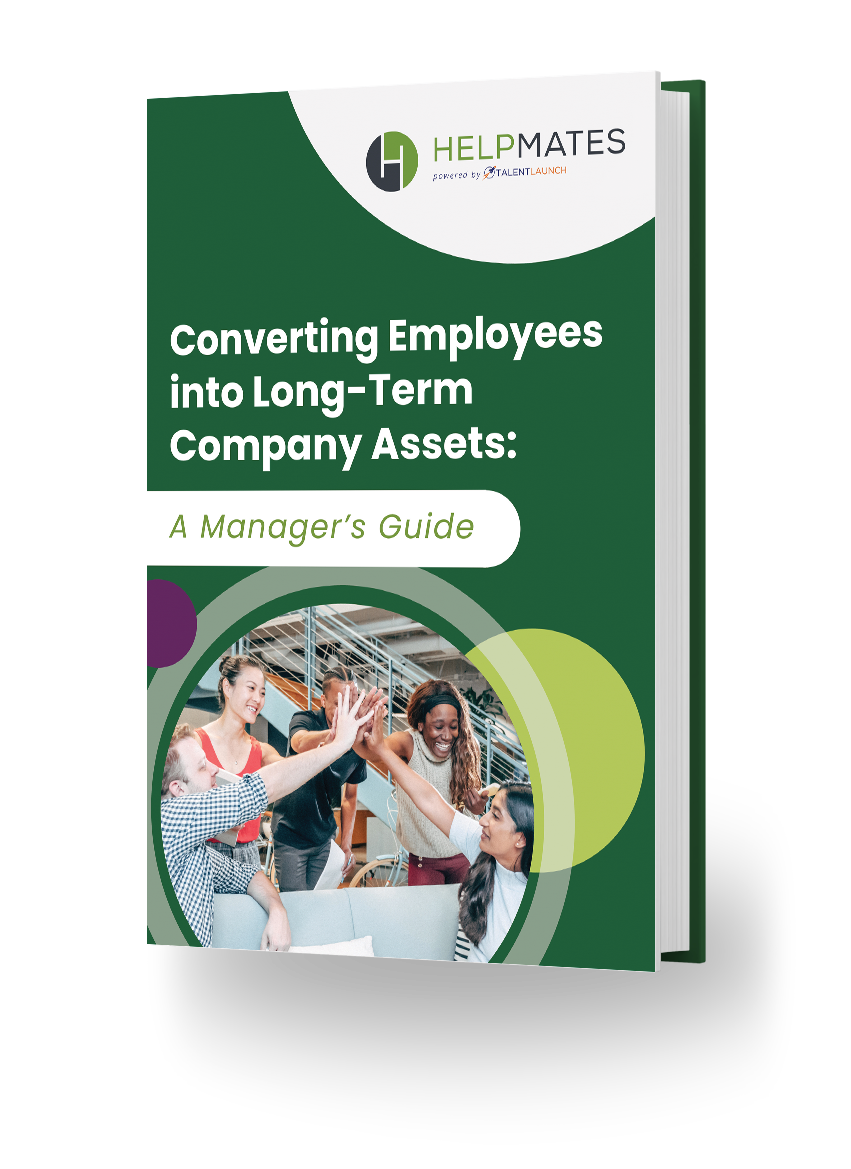Passive candidates are often considered the “holy grail” for employers – after all, who wouldn’t want to hire the competition’s best talent? But reaching passive candidates and enticing them to leave their current positions can prove challenging.
Stop thinking like a recruiter to hire passive candidates.
Sounds like some difficult advice, doesn’t it? How can you NOT think like a recruiter? It’s important, though — thinking like an employee instead of a recruiter can help you understand and pinpoint what will resonate with passive candidates. But your work isn’t finished once you’ve opened up communication with passive candidates. Here is some advice to help you say the right things (and avoid saying the WRONG things):
- Avoid going too far on LinkedIn. LinkedIn is a powerful tool for recruiters, putting you within reach of just about any professional across the globe. But use LinkedIn incorrectly and you can quickly alienate (or anger) candidates, sabotaging your current and future recruiting efforts along the way. These quick tips can help you avoid LinkedIn mistakes:
- InMail. Keep messages short and sweet. Remember that many candidates are reading their messages on smartphones. If you’re using LinkedIn’s recruiting tools, you can send InMail to just about anyone, but don’t badger candidates with every detail about your company or your jobs. Instead, start off with some positive feedback on the candidate and his or her profile. Quickly explain who you are and why you’re reaching out, then include a link to your specific job opening, if appropriate. Finish by including your contact information and a note explaining if you’ll follow up (and when).
- Connection Requests. Once again, short and sweet is the rule here. Especially in certain industries (like tech), candidates are being inundated with messages from recruiters. Want to stand out? Keep your messages short and quickly explain what’s in it for the candidate. Don’t ever lie about why you’re reaching out or how you may or may not know a candidate. This may sound like common sense, but it can get cutthroat out there for talent – don’t ever be tempted to damage your reputation by lying.
- Group messages. Sure, you may be able to send group messages through LinkedIn, but that doesn’t mean you should. Yes, it takes longer to send individual messages to candidates, but group messages are the easiest way to get your name, company and job trashed by passive candidates. They’re already employed (and possibly quite happily so). If you can’t take a few minutes to craft a unique message to each person, how could passive candidates feel as if you truly value them and their potential contributions to your company? Remember: Think like the passive candidates. What would make you feel valued by an employer? Which leads to the final point on LinkedIn communication…
- Get personal. Look at candidate profiles before sending InMail or a request to connect. Don’t cut and paste the same generic message to all the passive candidates you’re trying to reach. Pay close attention to schools and previous employers to see if you share an alma mater or colleague. Look at any portfolio work, project examples or LinkedIn Pulse posts, then comment on them in your message. Remember, you’re trying to “woo” passive candidates from their current positions. Flattery doesn’t hurt, and taking a genuine interest in someone by relating to items in their profile instantly helps you stand out from the pack.
- Try weekends. It may seem counterintuitive, but candidates get tired of hearing from recruiters all week. Following the recommendations above (whether you’re using LinkedIn, email or another communication method) in communications on the weekend can help you stand out and open the door to more communication.
- Work harder on referrals. Putting your effort into new, passive candidates is important, but it’s critical to value your current candidates and employees. Foster an environment where they want to refer more people to you. Recruiting and HR should be working together to build a strong culture that increases retention rates and supports an environment where your employees want to refer their friends and former colleagues. According to research from LinkedIn, referred employees have longer tenure and higher performance, so in addition to maximizing your recruiting efforts, getting more referrals just makes better business sense.
- Go beyond social media. LinkedIn is a great option for reaching and communicating with candidates, but it’s just one option. It’s important to also go where passive candidates in your target industries spend time. Professional organizations, associations, college career centers and niche websites/forums are a good place to start. Build relationships by providing value there (not instantly recruiting or trying to sell candidates on your organization). Not only are your communication efforts more likely to be successful, passive candidates may start reaching out to you directly to look for new opportunities!
- Change your approach. Just as your messages and communication should be quick and to the point, once you’ve gained the interest of passive candidates, don’t put them through your standard interview/hiring process. Instead, brainstorm questions that could help uncover hidden problems within their current jobs that your new jobs could somehow solve. These questions provide a strong starting point. Keep it simple for passive candidates throughout – avoid putting them through the wringer with a long online application or drawn out interview process. If you’ve identified passive candidates who are an ideal fit for your organization, make it easy for them to make the switch. Offer interview times outside normal business hours, accept a resume instead of a long application — do everything you can to simplify the process and make your organization an appealing choice.
Passive or not, top talent acquisition is a goal for every organization. Helpmates has an extensive network of top talent in a range of industries and disciplines across Southern California. We’ll help you find the best talent to impact your bottom line. Contact us today to learn more.
Image courtesy of stockimages at FreeDigitalPhotos.net.








